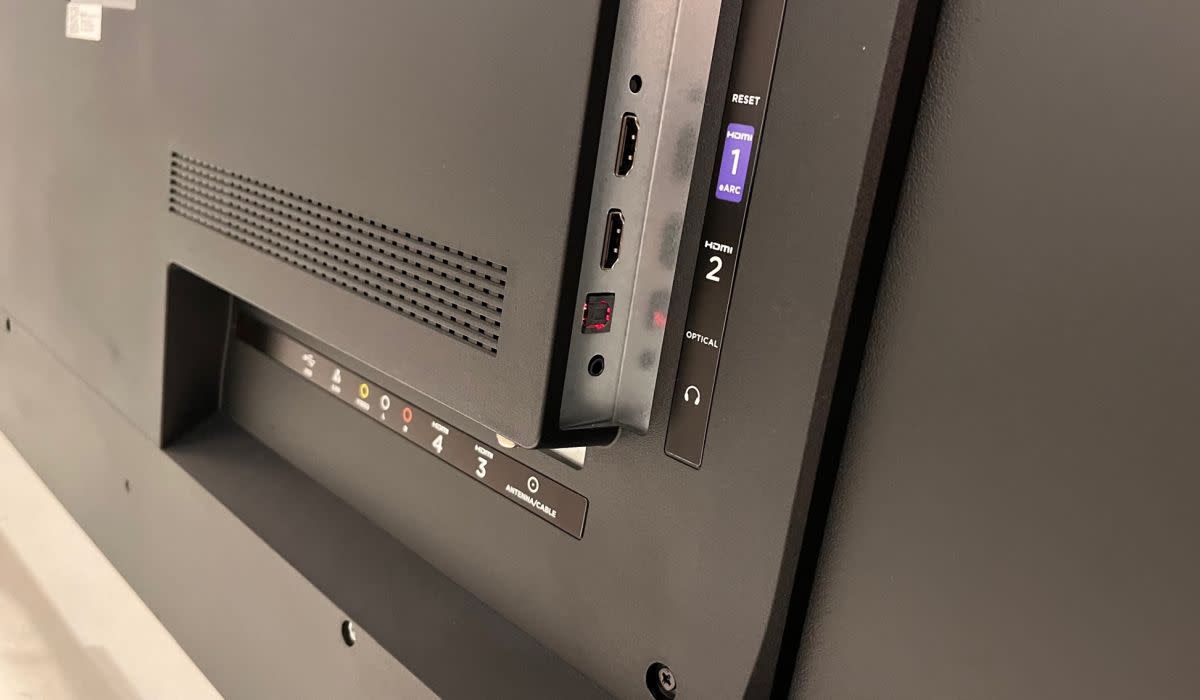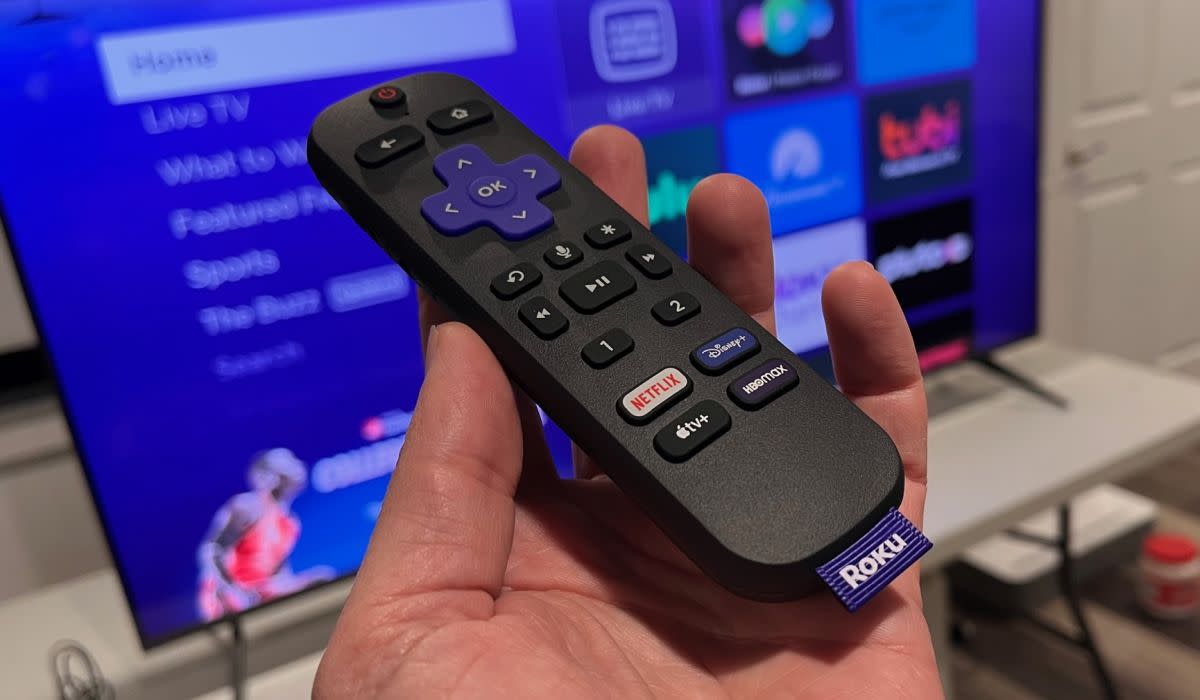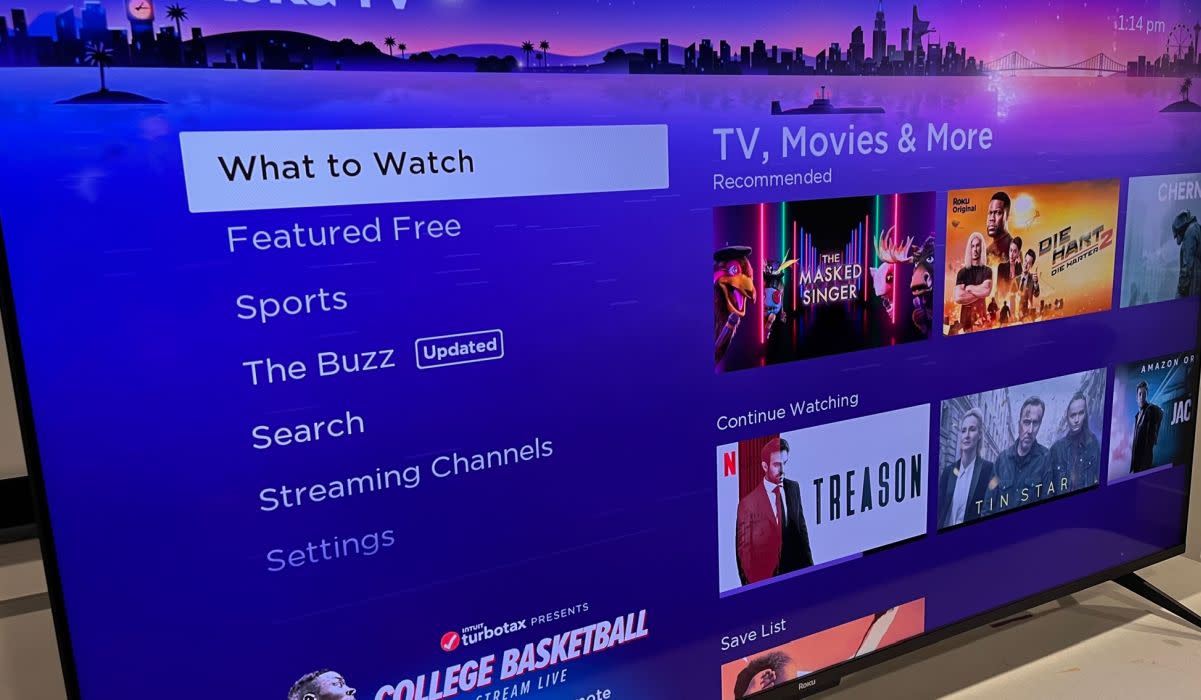I tried the new Roku Plus Series TV and it's pretty great — here's my review
You've probably heard the name Roku, maker of popular TV streaming devices. And Roku's streaming software can be found in TVs from Hisense, TCL and other brands. Now, just to round things out, the company is making actual televisions, the first of which are the Select and Plus series. This prompts an important question: Is a Roku TV better than a TV with Roku? (I know: Roku. Roku. The word has lost all meaning.) Eager to find out, I reviewed the 65-inch Roku Plus Series QLED 4K, which is currently priced at $800 and available exclusively at Best Buy. How does it compare with other mid-tier TVs? Let's get streaming.
Before I dive into the particulars of the TV itself (which is also available in 55- and 75-inch sizes), let me acknowledge the secret sauce: simplicity. The cheerful, colorful Roku interface remains the easiest of all to learn and use, thanks in part to oversize app icons and a text-based menu system. In comparison, Amazon Fire TVs and Google-powered TVs are much less intuitive, muddling things with small or unlabeled icons and a lot of interface clutter. If you want the shallowest possible learning curve, a Roku TV is the way to go.
Is the Roku Plus Series TV difficult to set up?
Quite the opposite, though as with any new TV purchase, first make sure your furniture will accommodate it. The legs attach using six provided screws, and for this model you'll need a television stand that's at least 53 inches wide and 14 inches deep. Unlike some Hisense TVs I've tested recently, the Roku doesn't let you mount the legs closer together to fit narrower stands. Wall mounting is also an option, of course; the TV has 400mm x 300mm VESA mounting holes.
I like that the TV's ports are clearly identified with large, high-contrast labels. Every other TV manufacturer should copy this. I don't like that only two of the ports (HDMI 1 and 2) are side-facing; the rest all point down, making them difficult to access. Plus, they're all bunched together near the center of the TV instead of closer to the edges.

The first time you power on the TV, the software walks you through the necessary configuration steps. If you already have a Roku account, it'll save you extra time. However, while I was happy to discover that most of my existing apps appeared automatically, and some (like Hulu and Paramount Plus) were already signed in, I still had to manually provide a few passwords (like for Netflix). What's more, my apps weren't arranged the way I had them elsewhere, so I had to reorganize them myself.
What features are included with the Roku Plus Series TV?
As noted above, this is a mid-tier TV, with features and image quality that are roughly comparable to similarly priced models from Hisense, LG, Samsung and Sony. The standouts here include QLED (aka quantum dot), local dimming, auto-brightness and Dolby Atmos–certified audio. Needless to say, this isn't an OLED panel, which would likely result in a much higher price tag. Roku hasn't committed to whether OLED is part of its future plans.
The Plus Series includes a total of four HDMI ports (one of them equipped with eARC for use with soundbars or other audio gear), plus Wi-Fi 6 (for the fastest possible Wi-Fi connectivity) and Bluetooth 5.2. The latter allows you to pair just about any wireless headphones or earbuds to enjoy no-lag private listening, though you can also go the wired headphone route if you prefer (see below).
The television comes with Roku's Voice Remote Pro, which I consider a best-in-class clicker. It's comfortable to hold and small enough to operate largely by feel (though I do wish it had backlit buttons for easier use in the dark). There's a jack for plugging in wired headphones or earbuds for private listening, two "personal shortcut" buttons you can program to do just about anything (launch a streaming app, go to settings, etc.) and support for hands-free voice control.

To use a voice command, you just say "Hey, Roku," and then ask for whatever: "Launch Netflix," "Show me comedy movies," "Find kid TV shows," and the like. There's also a lost-remote option that'll make it beep; just say, "Hey, Roku, find the remote."
This is great stuff, though you'll be glad to know the Plus Series can also work with Apple HomeKit, Amazon Alexa and Google Assistant. Just note that while Alexa and Google can perform many of the same functions as Roku's own voice assistant, Siri is limited to just the basics: power on/off, input switching and so on.
If you don't like the idea of a device that's always listening, you can disable the Roku's hands-free option just by sliding a switch on the remote. You'll still be able to use voice commands, but you'll have to press the microphone button first.
The remote runs on a rechargeable battery, meaning you don't have to rummage the junk drawer for replacement alkalines at an inopportune time. You do, however, have to remember to charge it once in a while. Thankfully, an onscreen indicator appears when remote power is running low. My only complaint here is that it relies on a micro-USB charging port instead of USB-C. (Hey, Roku, it's 2023!)
How is Roku Plus Series TV image quality and audio?
The way I test a television is by plunking down in front of it and watching as much content as I can: movies, TV shows, sports, YouTube videos and so on. (I know, it's a rough job.) Along the way, I try to notice anything that seems off: colors that look muted or overly saturated, black areas that appear gray or blotchy, a lack of uniformity around the edges. Of particular importance: Is the picture bright enough?
I'm happy to report that the Roku TV Plus Series scored high marks (in my own personal rating system) in all these areas. Indeed, I found the overall image quality to be superb: bright, colorful, uniform and perfectly black where it needed to be. I was especially impressed while watching Solo: A Star Wars Story, a movie that can quickly expose the brightness limitations of any TV. In lesser models, many scenes (starting with most of the first 10 minutes) look dark and muddy; the blue-tinged Lady Promixa sequence can be almost unwatchable. But Solo looked sufficiently bright and very balanced overall. The Force is strong with this one.

All this despite the fact that the screen offers "only" a 60Hz refresh rate, whereas many TVs in this category provide 120Hz or better. As a result, there's no motion smoothing (aka judder reduction), which is used at higher refresh rates to combat jerkiness in fast-moving content (like video games, sports and action movies). But this results in the dreaded soap-opera effect, which I despise. So I'm perfectly happy with the refresh rate as it is, but avid gamers or sports fans might prefer something higher, in which case a different television is in order.
For the record, I watched sports and action movies and noticed absolutely no jerkiness or any other issues that smoothing supposedly eliminates. Mostly, I was just happy I didn't have to immediately dive into the settings to turn it off, which has been the case with every other TV I've tested in recent years.
This is usually the part where I tell you that all built-in TV speakers are terrible and you should strongly consider adding a soundbar. The Plus Series comes equipped with larger speakers than most; consequently, they sound better than most. There's an unusual amount of fullness here, and even some bass. That said, they're still down-facing speakers and nowhere near as good as what you'll get from a soundbar. Which one would I recommend? Check out my list of the best soundbars you can buy in 2023.
Final thoughts on the Roku Plus Series TV
The look and feel of the Roku interface has barely changed over time, and that's a good thing. Instead, Roku continues to make small tweaks that improve the user experience. For example, a just-released update (Continue Watching, located in the What to Watch menu) lets you quickly resume whatever movie or series you were most recently viewing. If you were midway through, say, the current season of Survivor, you'd just click that in Continue Watching and the TV would open Paramount Plus and take you to the next episode. (Alas, not all streaming services support this option at the moment, but Roku intends to add more over time.)
Meanwhile, Roku's new line of smart-home cameras can stream live video right to the television. In fact, if someone rings your Roku Video Doorbell while you're watching a show, a notification will pop up onscreen. Neat stuff.
Viewed in a vacuum, the Roku Plus Series TV is an impressive first effort from the company behind what is arguably the best streaming ecosystem. If I'm comparing it with something like the 65-inch Hisense U7H, which is priced the same but runs on Google, I'm going to choose the Roku because I like the interface, remote and speakers better. However, the Hisense's 120Hz refresh rate might appeal more to gamers and sports fans, and I can't help but admire the two-year warranty. (Roku's TV is covered for one year, the industry standard.)
Bottom line: If you're shopping for a mid-tier TV, there's no question the Plus Series belongs on your short list.
